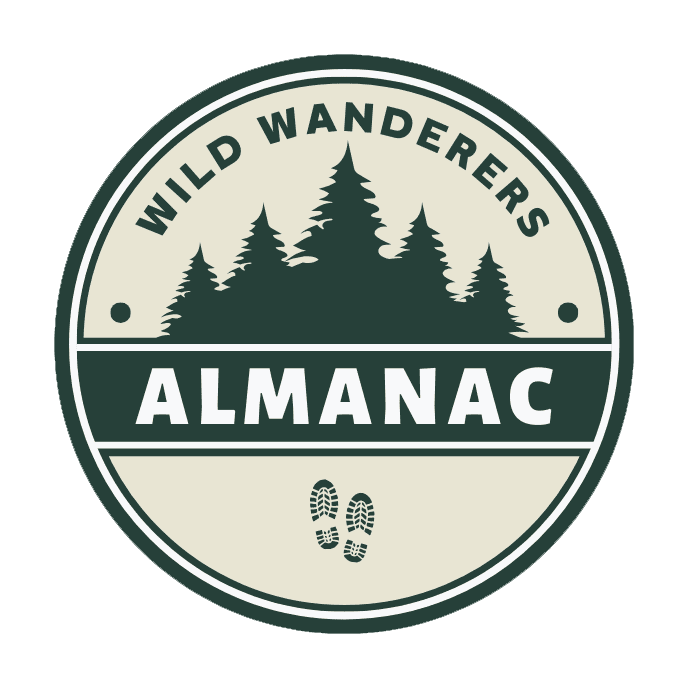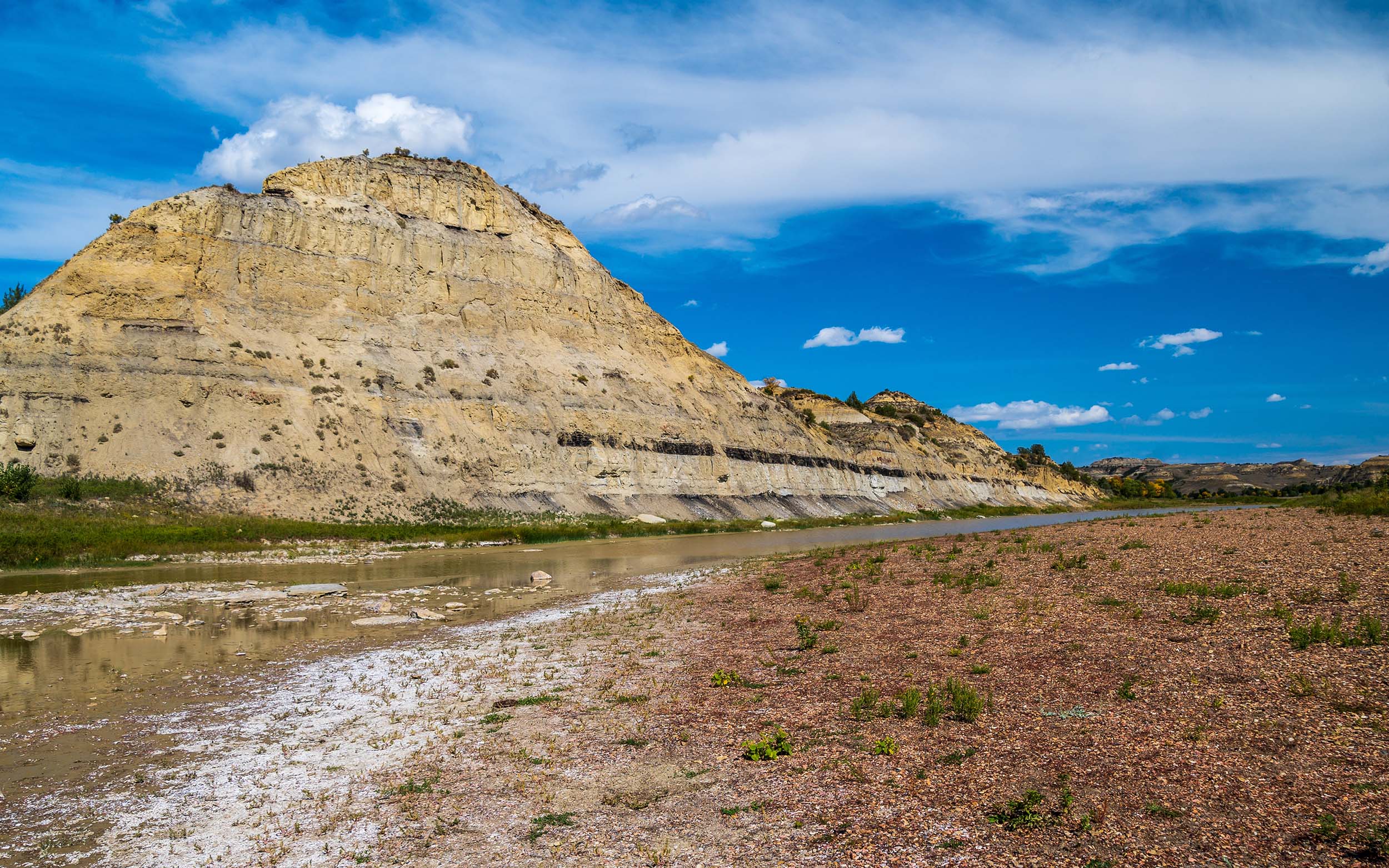Park Information Quick Facts
Location: North Dakota
Park Size: 70,000 Acres
Time Needed: 1-2 days
Best Season: Summer
Must Do: Town of Medora
Pro Tips:Bring binoculars or a spotting scope to fully appreciate the park’s abundant wildlife and sweeping landscapes.
Visitor Centers
Theodore Roosevelt National Park has two main visitor centers, each offering unique experiences and valuable information to enhance your visit. The South Unit Visitor Center, located in Medora, North Dakota, serves as a hub for exploring the most accessible and frequently visited part of the park. Inside, visitors can view exhibits about Theodore Roosevelt’s time in the Badlands and his role in conservation, watch an introductory film about the park, and browse a bookstore filled with maps, guides, and souvenirs. Adjacent to the center is the Maltese Cross Cabin, one of Roosevelt’s original ranch homes, where rangers offer interpretive talks about his life and connection to the area. This visitor center is a great starting point for learning about the park’s history and planning your adventures in the South Unit.
Plan Your Theodore Roosevelt Adventure Today!
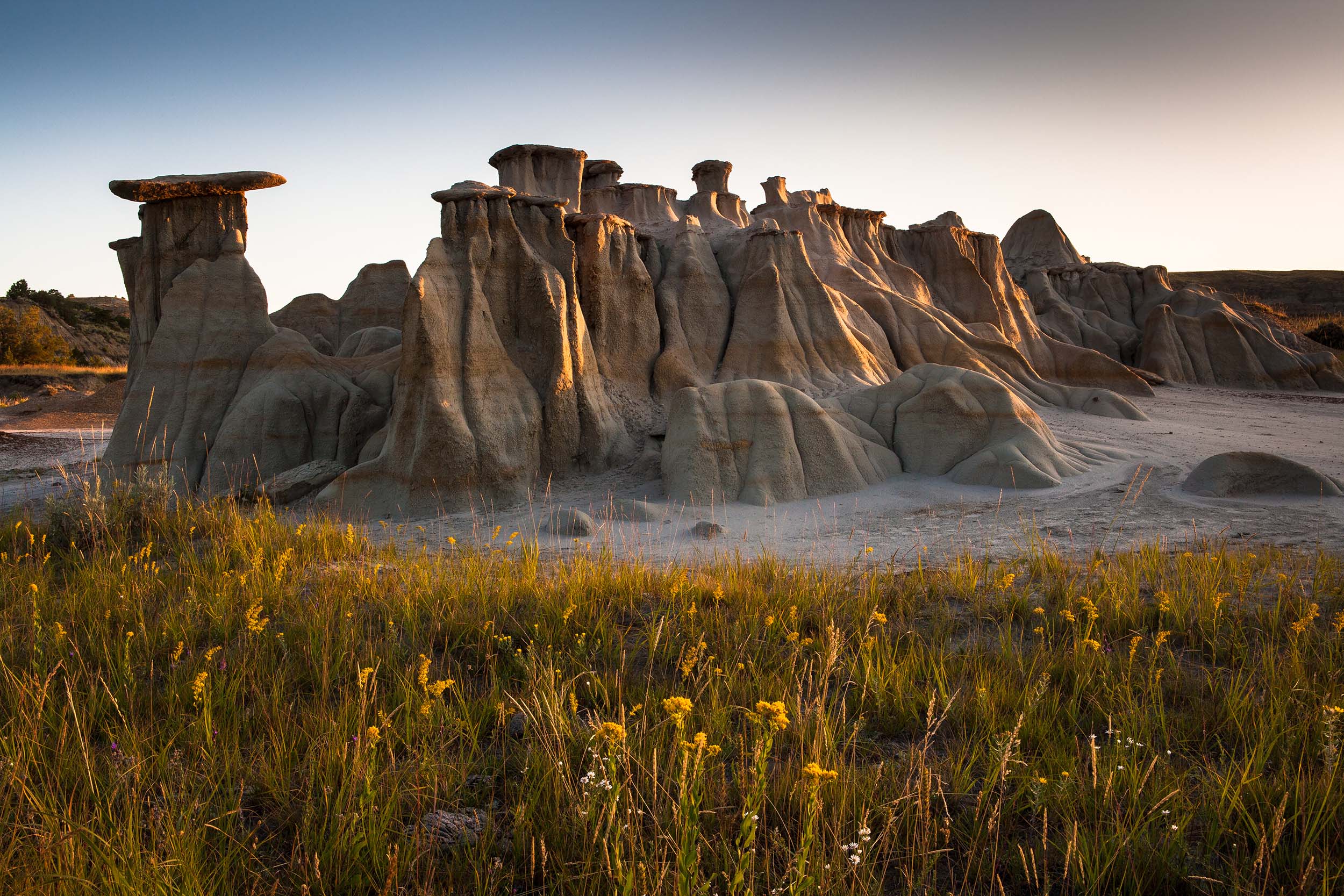
Getting There
How to Travel to Theodore Roosevelt National Park
Traveling to Theodore Roosevelt National Park requires careful planning, as the park is located in the remote Badlands of western North Dakota. The most common gateway is via the South Unit, accessible from the small town of Medora, which lies directly off Interstate 94. Medora is about 130 miles west of Bismarck, North Dakota’s capital, making it a convenient drive for those flying into Bismarck Municipal Airport. If you’re traveling from farther west, the South Unit is about 25 miles east of the Montana-North Dakota border. The North Unit, near Watford City, is further north and requires an additional drive, but the scenic beauty along the way makes the journey worthwhile.
For those coming from outside the region, flying into a nearby airport is the fastest way to start your journey. Airports in Bismarck, Dickinson, or Williston provide access to the park, with Dickinson Theodore Roosevelt Regional Airport being the closest at just 35 miles from Medora. From the airport, you can rent a car, as having your own vehicle is essential for exploring the park’s scenic drives and accessing remote areas. For road trippers, Interstate 94 and U.S. Highway 85 provide the main routes to the South and North Units, respectively, offering a glimpse of North Dakota’s open prairies and rolling hills along the way.
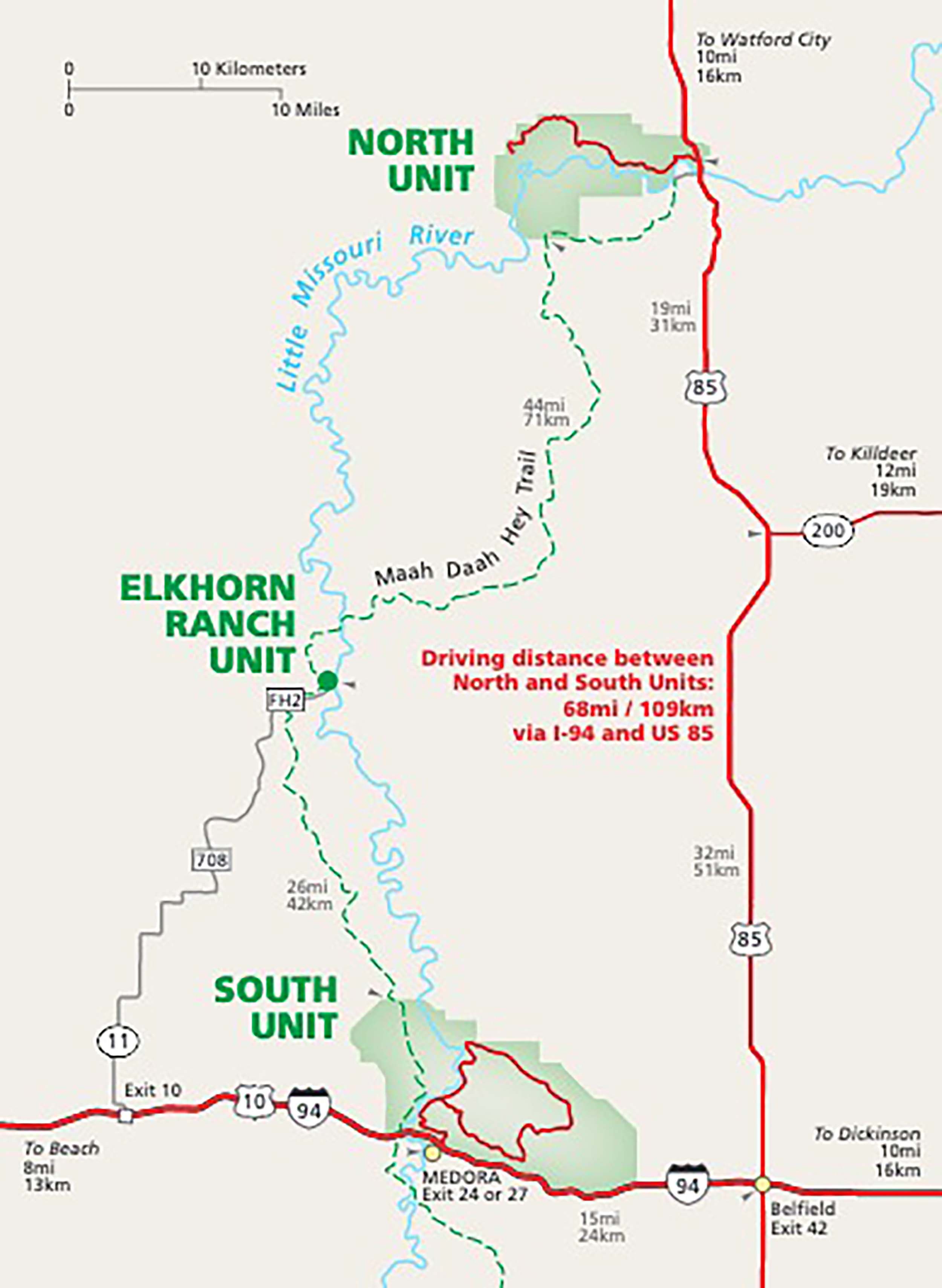
Camping
Cottonwood Campground (South Unit)
- Location: Situated in the South Unit of the park, near the scenic loop and the park’s main visitor center in Medora.
- Sites: 76 campsites available, with both reservable and first-come, first-served options.
- Amenities: The campground includes picnic tables, fire grates, drinking water, restrooms, and trash disposal. It also has a dump station.
- Season: Open from mid-April to mid-November.
- Special Features: Cottonwood Campground is surrounded by the park’s striking Badlands terrain, offering easy access to trails, wildlife viewing, and scenic drives. There are no hookups, and the campground is often filled during peak summer months, so reservations are advised.
Juniper Campground (North Unit)
- Location: Located in the North Unit of the park, about 40 miles from the town of Watford City.
- Sites: 25 campsites available, with both reservable and first-come, first-served options.
- Amenities: Sites include picnic tables, fire grates, drinking water, restrooms, and trash services. There are no electrical, water, or sewer hookups.
- Season: Open from mid-May to mid-September, depending on weather conditions.
- Special Features: Juniper Campground is nestled within the scenic hills and canyons of the North Unit, offering a quieter, more remote camping experience compared to the South Unit. It’s ideal for those seeking solitude and access to the North Unit’s trails and views.
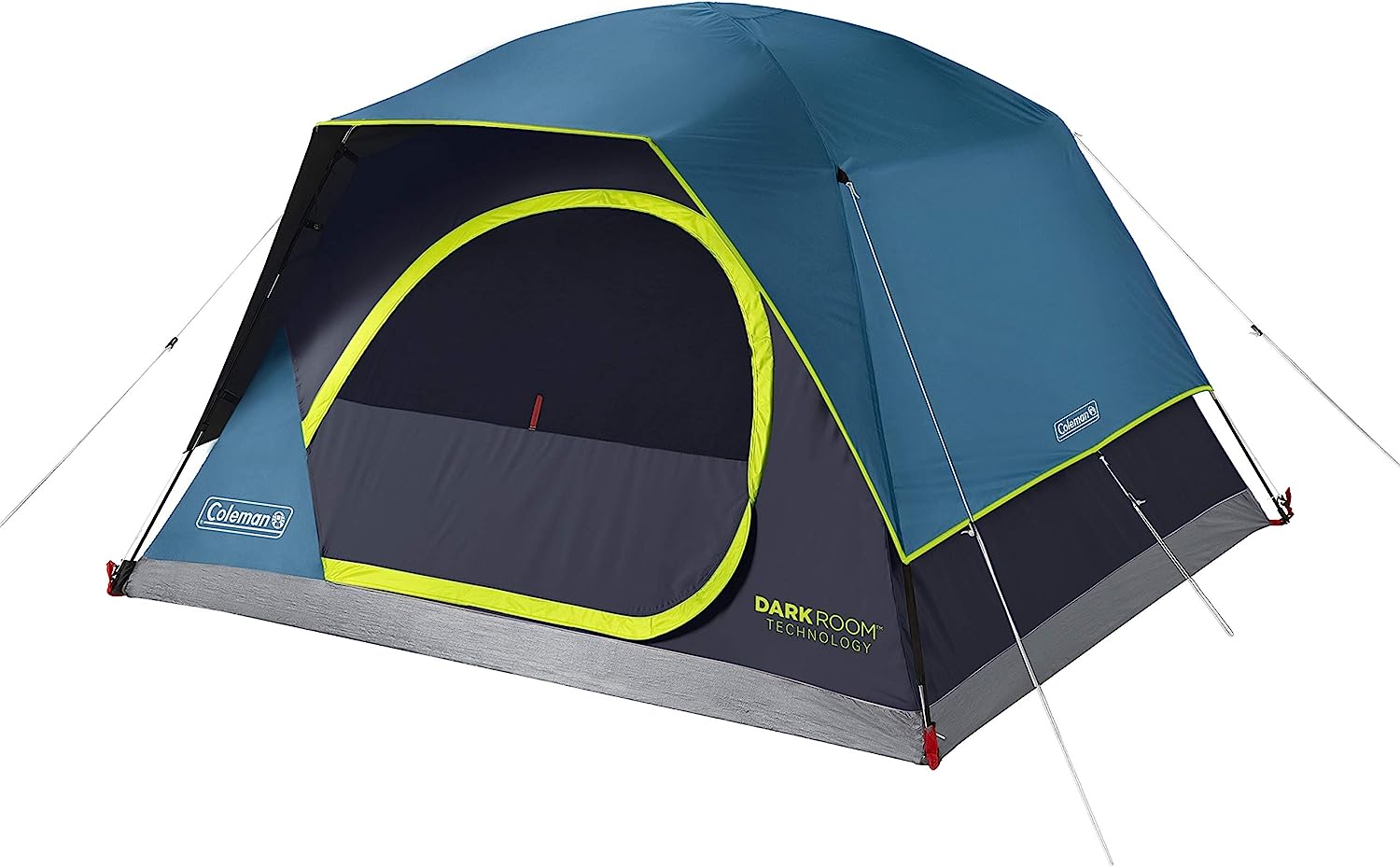
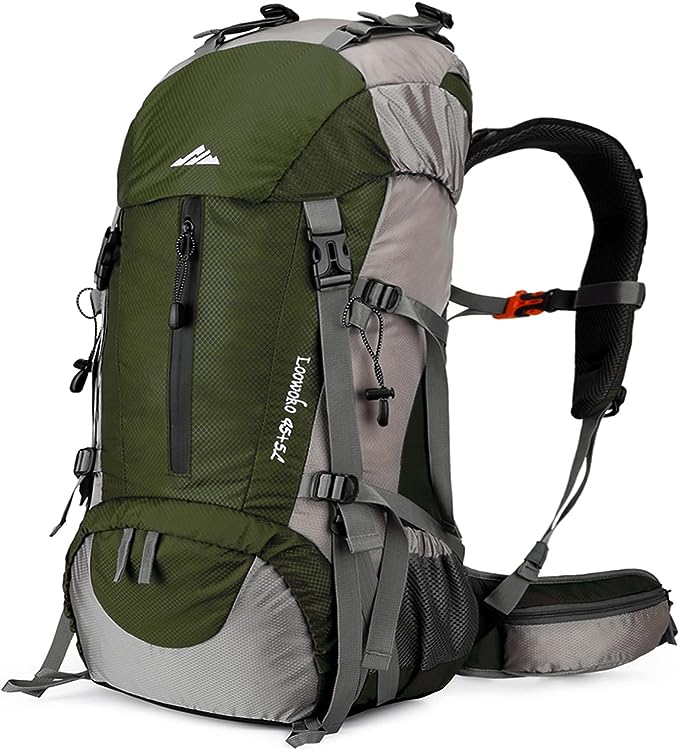
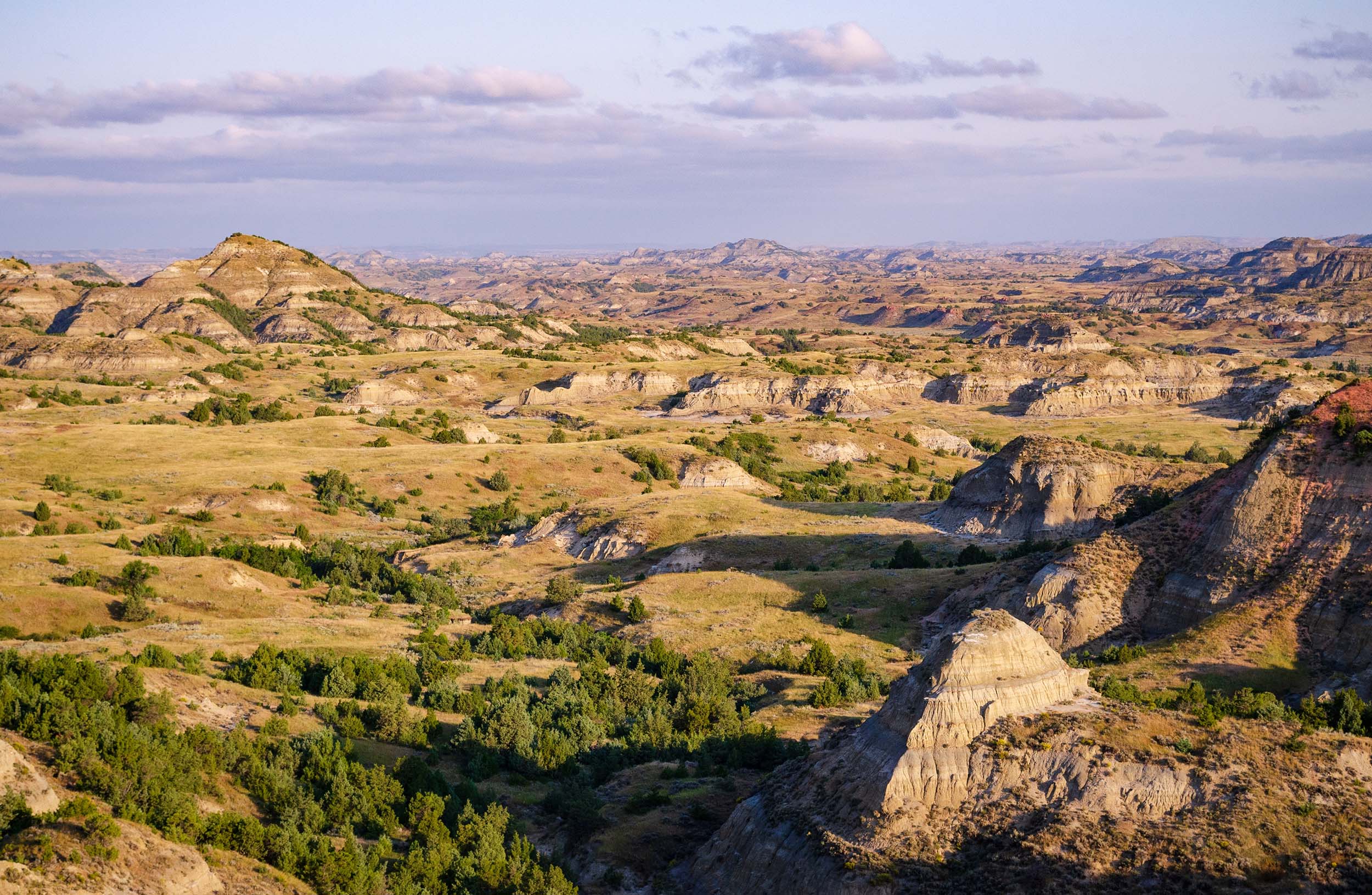
Popular Hiking Trails
Petrified Forest Trail
- Length: 0.5 miles (loop)
- Difficulty: Easy
- Description: This short, easy trail takes visitors through a unique area of the South Unit filled with fossilized trees and colorful geological formations. It’s a great introduction to the park’s ancient history and features interpretive signs along the way.
- Highlights: Petrified wood, panoramic views, and fascinating geological features.
Coal Vein Trail
- Length: 1.2 miles (loop)
- Difficulty: Moderate
- Description: This trail takes visitors through the park’s scenic canyon areas, leading to the site of exposed coal veins. It offers a combination of easy and moderate terrain with an interesting geological focus.
- Highlights: Unique rock formations, wildlife, and scenic canyon views.
Caprock Coulee Trail
- Length: 1.5 miles (loop)
- Difficulty: Moderate
- Description: A scenic loop trail that descends into the canyon, offering views of the rugged terrain and the opportunity to see wildlife. It is a moderately strenuous trail with elevation changes.
- Highlights: Dramatic views of the Caprock Coulee, wildlife sightings, and canyon scenery.
Boicourt Trail
- Length: 0.7 miles (loop)
- Difficulty: Easy
- Description: A short and accessible loop trail that offers an easy walk through the North Unit’s scenic prairie. This trail is perfect for those looking for a quick hike with beautiful views.
- Highlights: Prairie vistas, wildlife sightings, and an easy hike suitable for families.
Ridgeline Trail
- Length: 2.5 miles (one-way)
- Difficulty: Moderate
- Description: This trail takes hikers along the top of a ridge, offering incredible views of the Badlands and prairie below. It’s a moderately challenging hike that provides an excellent opportunity to spot wildlife.
- Highlights: Sweeping views of the South Unit, wildlife sightings, and an opportunity for a more strenuous hike.
The Painted Canyon Overlook Trail
- Length: 0.5 miles (out and back)
- Difficulty: Easy
- Description: A short, paved trail with a gradual incline, this hike leads to a scenic overlook of the Painted Canyon. It’s an ideal choice for a quick and accessible hike that offers fantastic panoramic views.
- Highlights: Spectacular views of the Painted Canyon, short and easy hike.
Achenbach Trail
- Length: 6 miles (one-way)
- Difficulty: Moderate to Strenuous
- Description: A more challenging hike that traverses through the North Unit’s varied terrain, offering spectacular views and opportunities for wildlife sightings. It can be combined with the Caprock Coulee Trail for a longer, more strenuous hike.
- Highlights: Expansive views, rugged Badlands landscapes, and diverse wildlife.
Cannonball Concretions Pullout Trail
-
- Length: 0.25 miles (out and back)
- Difficulty: Easy
- Description: A brief, easy trail that leads to a fascinating collection of round, rock formations known as “concretions.” These unique geological features make the trail an interesting stop for geology enthusiasts.
- Highlights: Cannonball concretions, short and easy hike.
Hiking Trails in Theodore Roosevelt National Park
Hiking at Theodore Roosevelt National Park offers a remarkable opportunity to explore the park’s stunning landscapes, rich history, and diverse wildlife. The park features a variety of trails that cater to all levels of hikers, from easy, scenic walks to more strenuous, backcountry adventures. In the South Unit, popular trails like the Petrified Forest and Ridgeline Trails provide breathtaking views of the Badlands, with unique geological formations and wildlife sightings along the way. These trails allow visitors to experience the park’s dramatic scenery and gain insight into the area’s fossil-rich past, making them ideal for both casual hikers and those looking for a more immersive outdoor experience.
The North Unit of the park, which is less visited than the South Unit, offers more rugged and remote hiking opportunities. Trails such as the Caprock Coulee and Achenbach Trails take hikers through narrow canyons, expansive prairies, and high ridgelines, providing panoramic views of the surrounding landscape. These trails tend to be less crowded, allowing for a more tranquil experience, and they are often frequented by wildlife, including bison, elk, and wild horses. The North Unit’s more challenging terrain makes it an excellent choice for those looking for a wilderness experience that is both beautiful and adventurous.
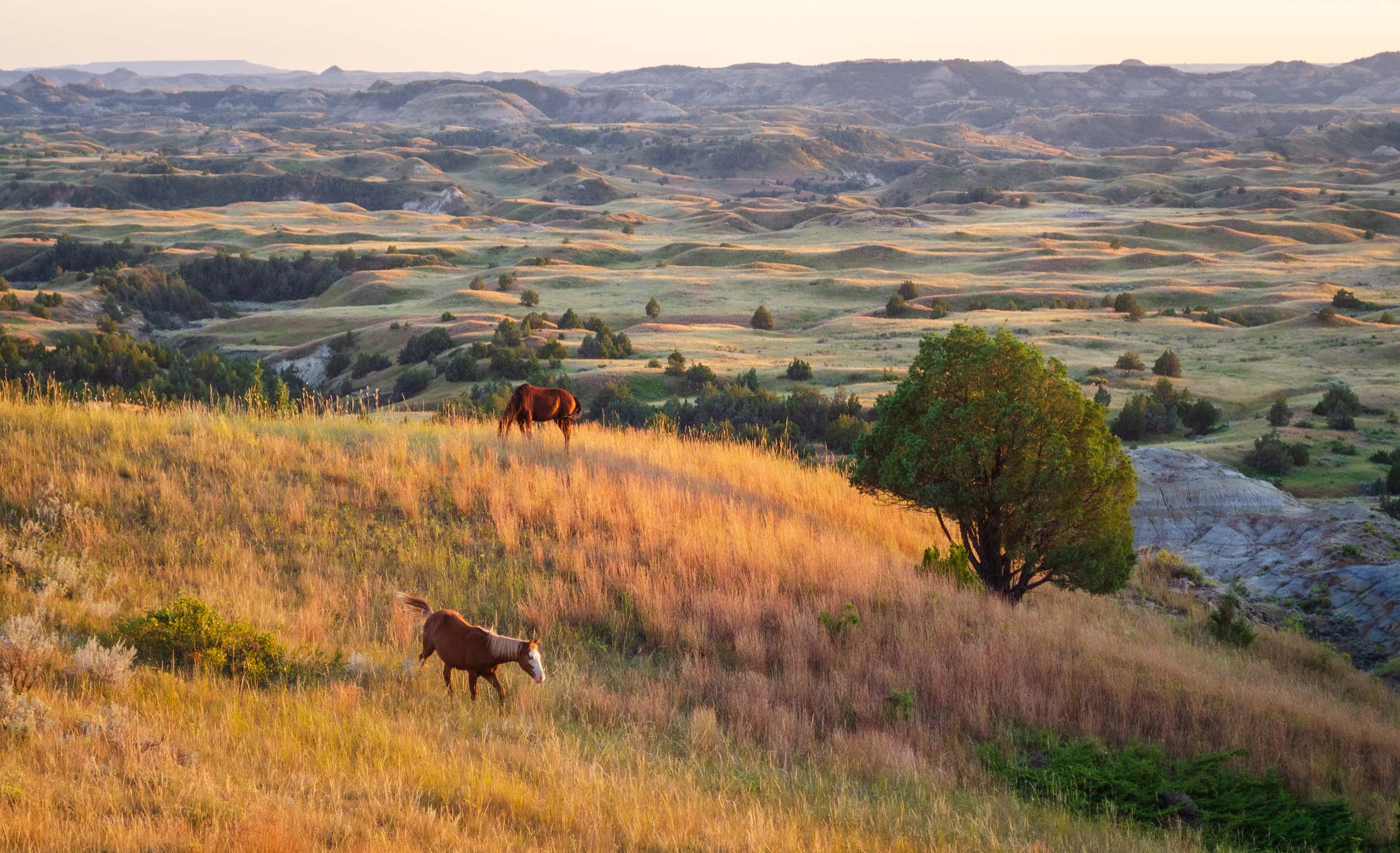
Wildlife at the Park
Theodore Roosevelt National Park is home to an impressive array of wildlife, making it a premier destination for nature lovers and wildlife enthusiasts. One of the park’s most iconic residents is the American bison, which roams the prairies and hills in large herds. These majestic animals were once on the brink of extinction but have made a significant comeback, thanks to conservation efforts in the park and beyond. Visitors can often spot bison grazing in the early morning or late afternoon, offering a striking image against the park’s rugged landscape. The park is also home to other large mammals, including elk, mule deer, and pronghorn antelope, which can be seen in the open grasslands or the wooded areas along the park’s trails.

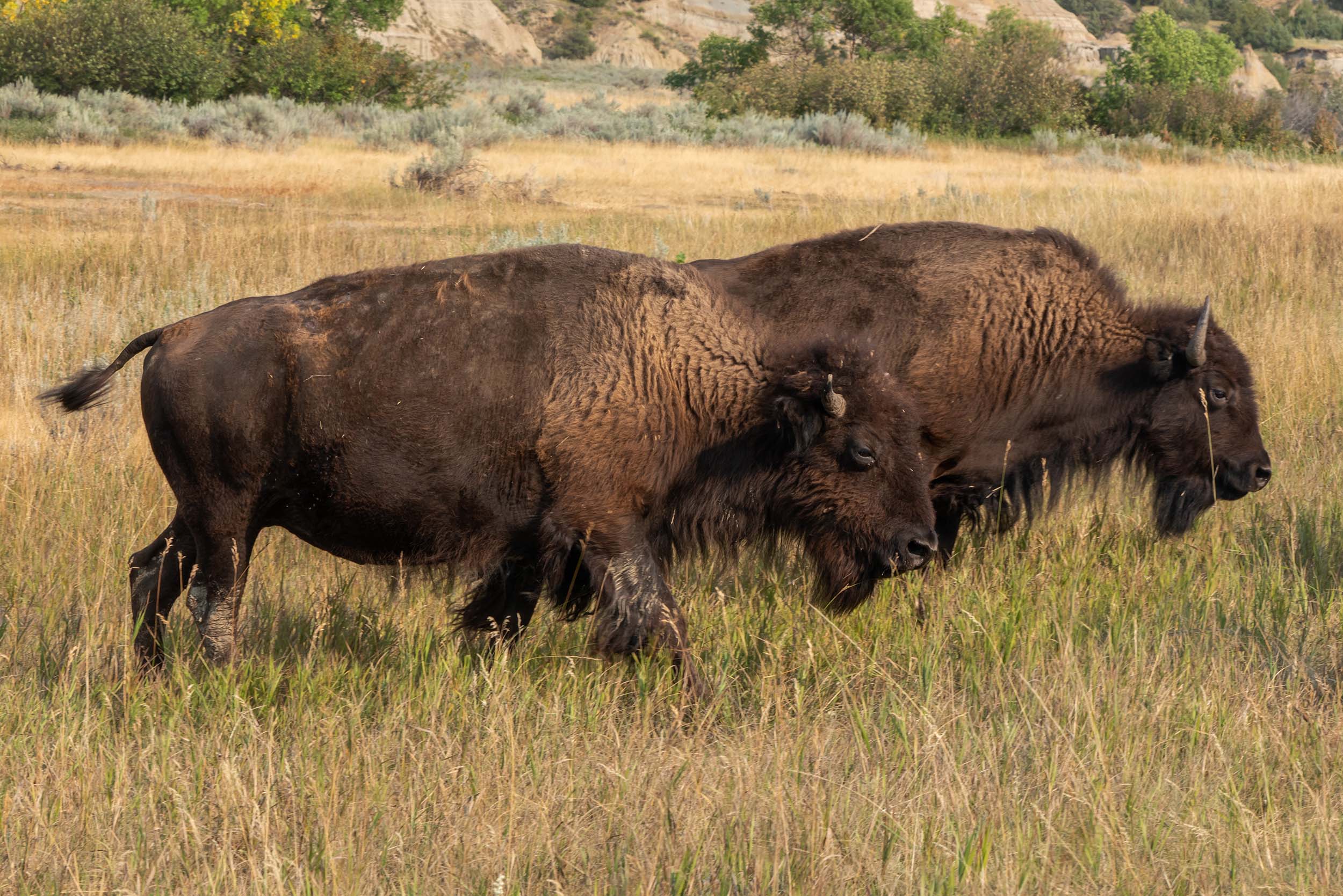
In addition to the large mammals, Theodore Roosevelt National Park supports a diverse range of smaller animals and birds. Prairie dogs are a common sight in the park, particularly in the South Unit, where their burrows create bustling communities. These small, social creatures are a favorite of visitors and are often seen along the side of trails, where they provide an entertaining spectacle. The park’s grasslands and mixed woodlands also host a variety of bird species, such as the Western Meadowlark, Red-tailed Hawk, and Northern Harrier. Birdwatchers can enjoy spotting these species, especially during spring and fall migration seasons, when the park becomes a stopping point for many migratory birds.
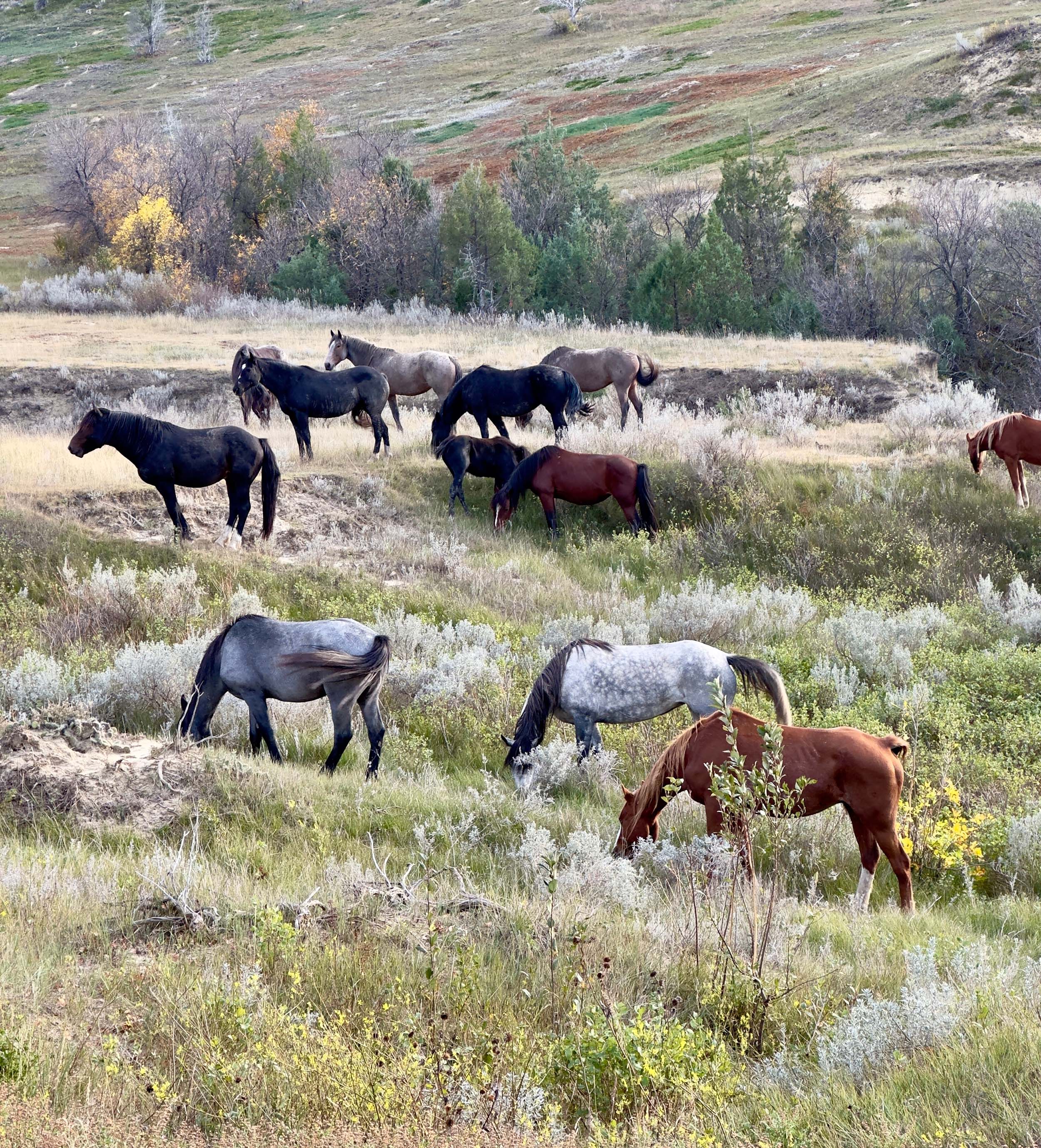
Gear We Used

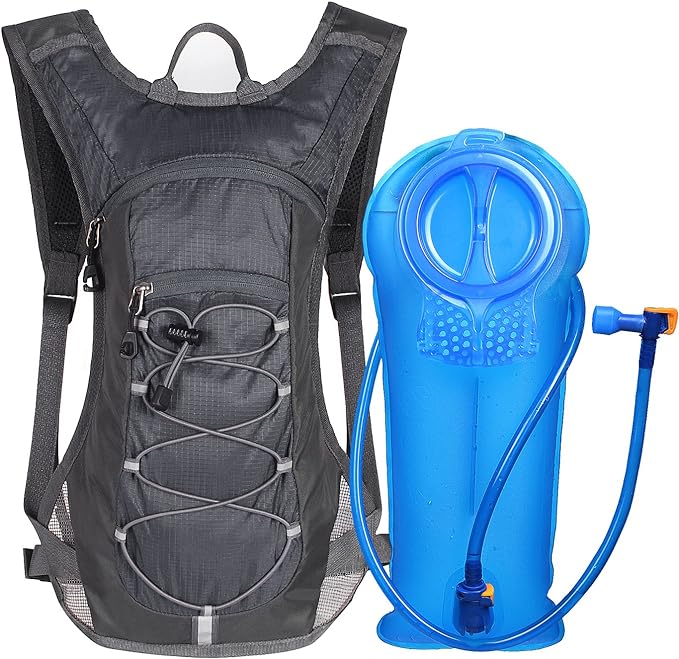
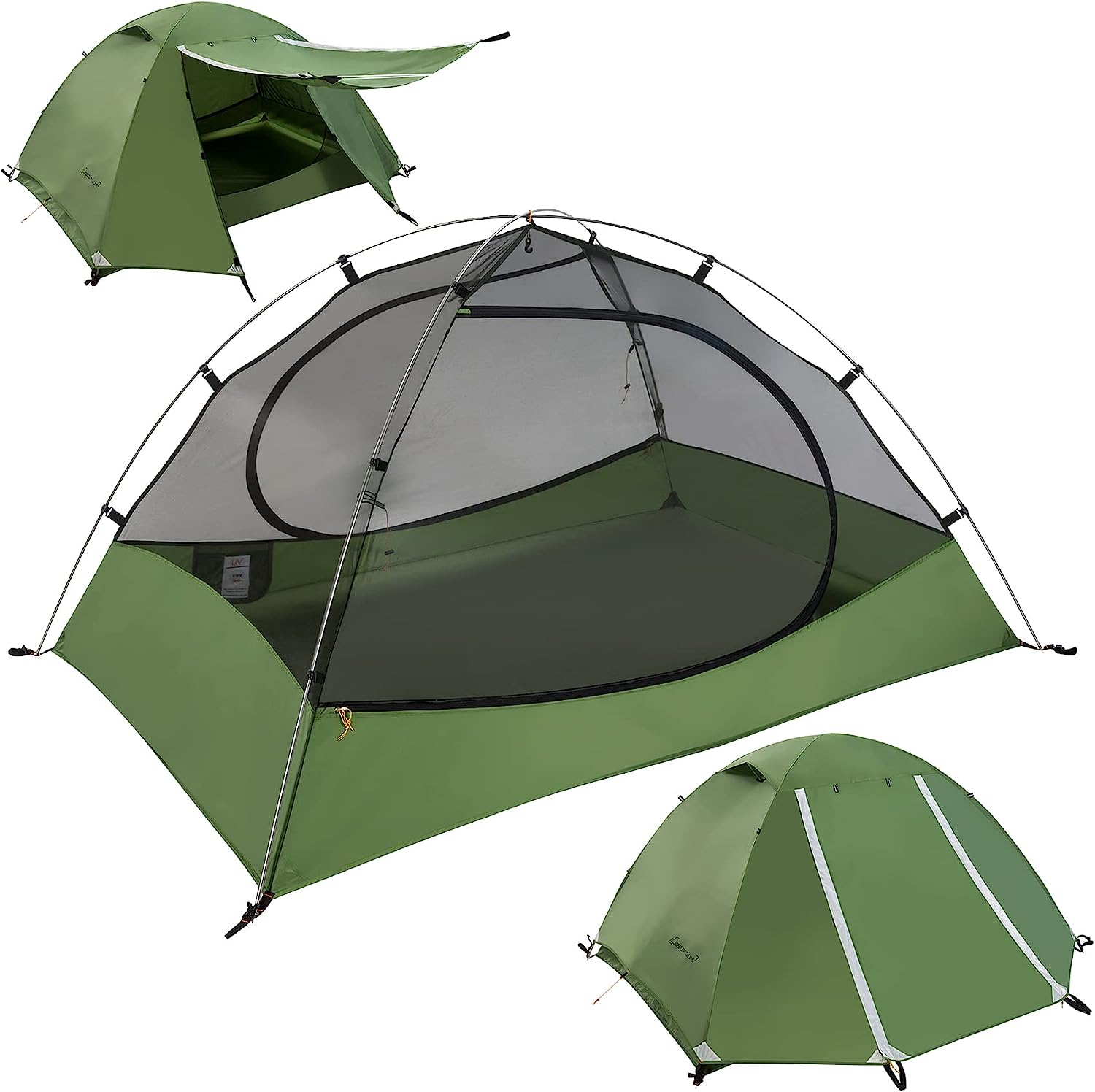
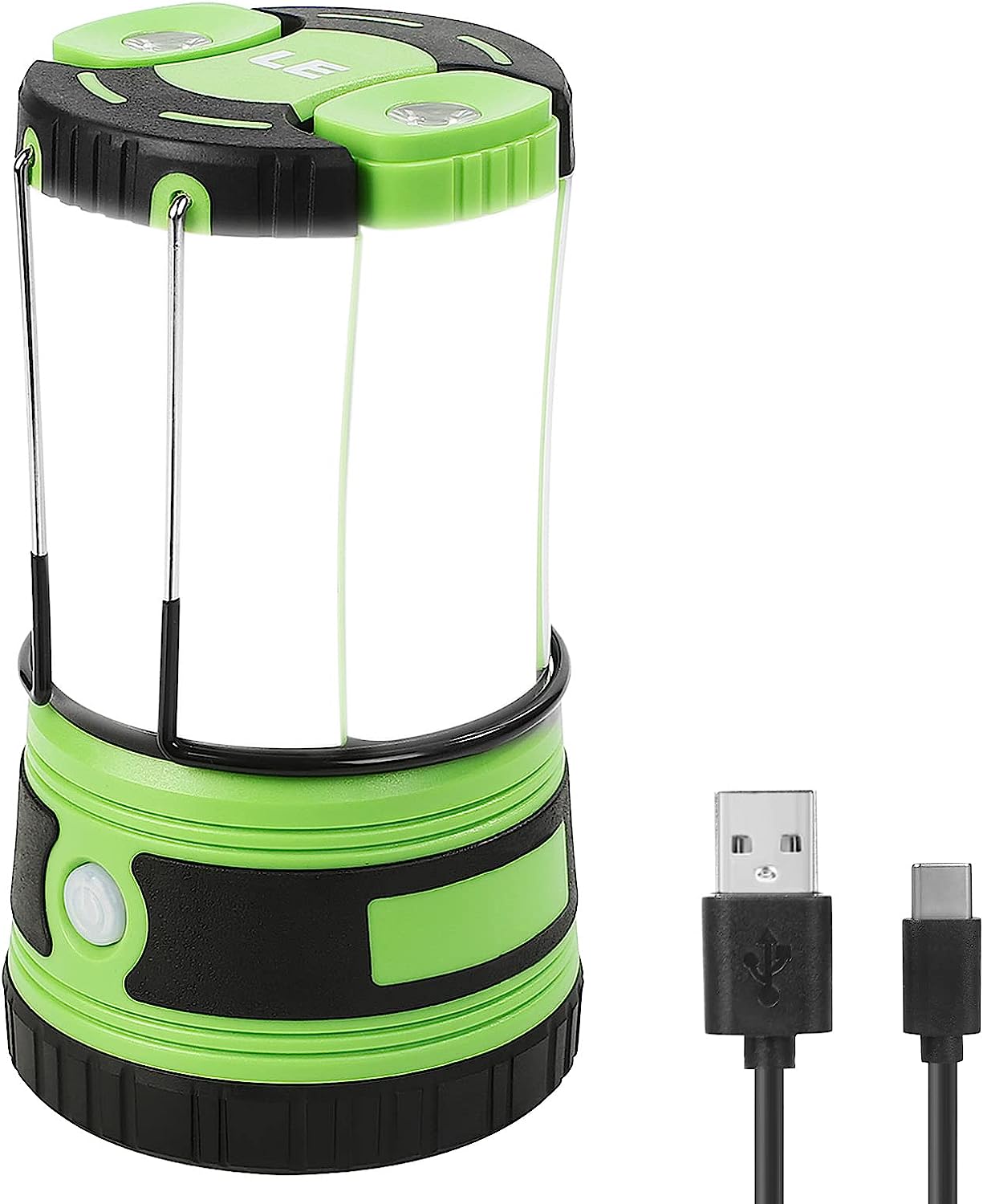

Must-Do Activities
Scenic Drives and Overlooks
Take a drive along the South Unit’s Scenic Loop Drive or the North Unit’s Scenic Drive for some of the park’s most breathtaking views. These routes provide easy access to stunning landscapes, including dramatic Badlands formations, open prairies, and dense canyons. Along the way, stop at designated pullouts and overlooks to capture photos and enjoy wildlife sightings, such as bison, wild horses, and elk. The Painted Canyon Overlook in the South Unit is especially popular for panoramic views.
Wildlife Watching
Theodore Roosevelt National Park is a wildlife haven, offering opportunities to spot bison, elk, pronghorn antelope, prairie dogs, and a variety of bird species. Whether on a scenic drive or hiking one of the park’s trails, keep your eyes peeled for wildlife. The best times for sightings are early in the morning or late in the afternoon when animals are most active. For a unique experience, bring binoculars to catch a glimpse of the park’s more elusive species, such as coyotes or bobcats.
Hiking the Trails
With a variety of trails to choose from, hiking is one of the best ways to immerse yourself in the park’s diverse landscapes. Whether you opt for the short, easy Petrified Forest Trail or the more challenging Achenbach Trail in the North Unit, the park’s trails offer something for everyone. Hikers can explore canyons, ridgelines, and prairies while enjoying solitude and wildlife encounters. Be sure to carry water and prepare for changing weather conditions.
Theodore Roosevelt National Park History
The history of Theodore Roosevelt National Park is deeply intertwined with the legacy of the 26th President of the United States, Theodore Roosevelt, who was profoundly shaped by his time spent in the Badlands of North Dakota. In the 1880s, a young Roosevelt traveled to the region to seek solace after the death of his mother and wife. The rugged landscape and harsh conditions of the Badlands ignited his passion for conservation and a deep respect for the American wilderness. During his time in North Dakota, Roosevelt ranched in the area and came to embrace the challenges of frontier life. His experiences in the Badlands were pivotal in shaping his environmental policies and his role as a progressive advocate for the conservation movement, which led to the establishment of national parks, forests, and monuments during his presidency.
In recognition of Roosevelt’s enduring connection to the region, Theodore Roosevelt National Park was established in 1947, long after his time spent in the area. The park was created to preserve not only the unique landscapes of the Badlands but also the historical and cultural significance of Roosevelt’s time in North Dakota. The park’s two main units—South and North—are a tribute to the natural beauty and ruggedness that inspired Roosevelt’s conservation efforts. The South Unit is home to the Maltese Cross Cabin, where Roosevelt lived while in the area, and visitors can tour this historic site to gain insight into his life during this formative period.
